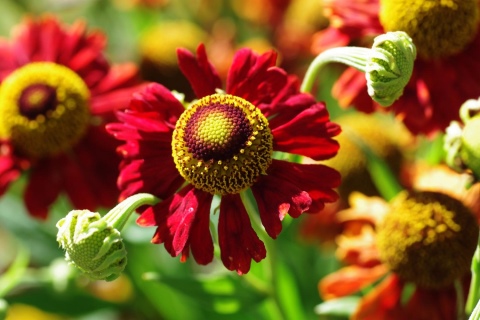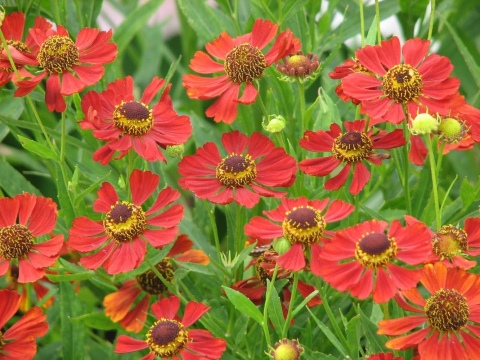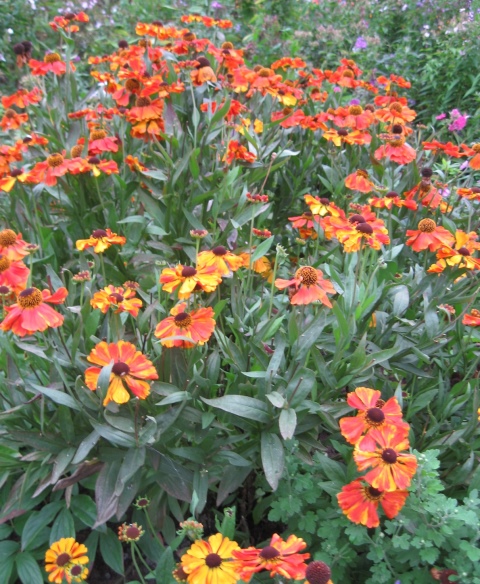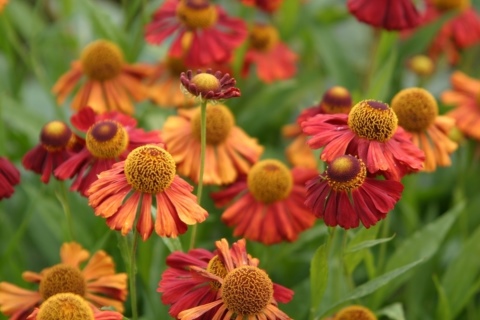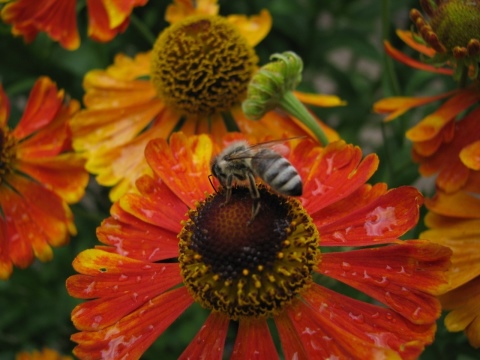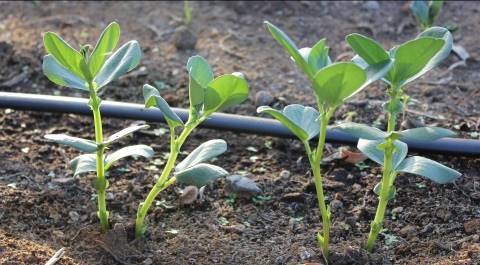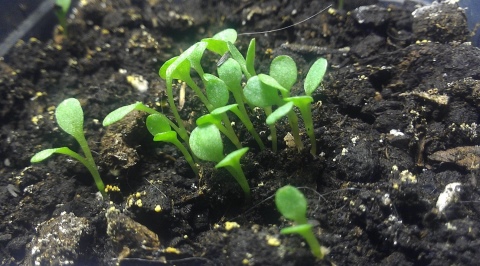Hellenium transplant and reproduction by dividing the bush
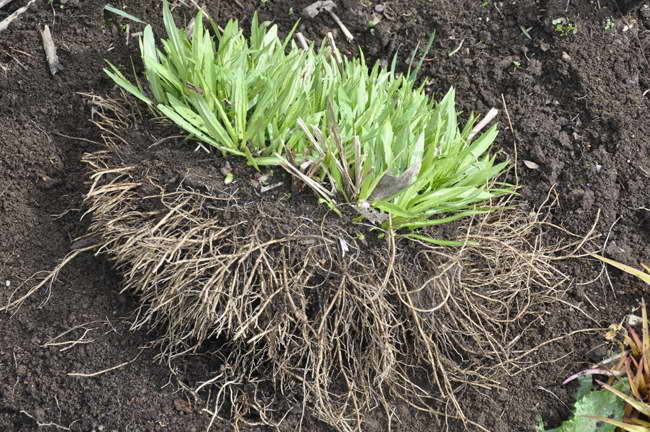
Transplantation and reproduction of hellenium by dividing the bush photo
As already mentioned, it is necessary to transplant Hellenium 4-5 years after disembarkation. A developed bush will degenerate over time to rejuvenate the plant and give space for development, and periodic division of the bush with repotting is required.
Carefully dig in the root and get a bush with a lump of earth.
Take a knife or shovel to cut the bush into several pieces, being careful not to hit the ground.
They are planted in deep holes up to 30 cm, on the bottom of which humus is poured.
The planting level remains the same without deepening the root collar. Keep in mind that the earth will settle, strive so that later the roots do not end up on the surface, which is also very bad.
Water abundantly to moisten the soil to the full depth of the hole.

How to divide a helenium bush photo Gelenium hybrid planting and care
Sometimes they do this: they dig in the bush around the edges, separating its parts, and leave some untouched. Since the bush has been split, there will be room for new root buds to grow and the plant will rejuvenate. And the separated delenki are planted in a new place.
Growing camassia from seeds
Sowing in the ground

Camassia from seeds photo of seedlings in the open field
Since the seeds need long-term stratification (for about 5 months), it is better to sow them before winter so that they go through this process naturally. Sow around the end of September. Make grooves and sow seeds. The seeding depth is about 2 cm. Thin the seedlings, leaving a distance of 30 cm between the individual plants.
Growing seedlings
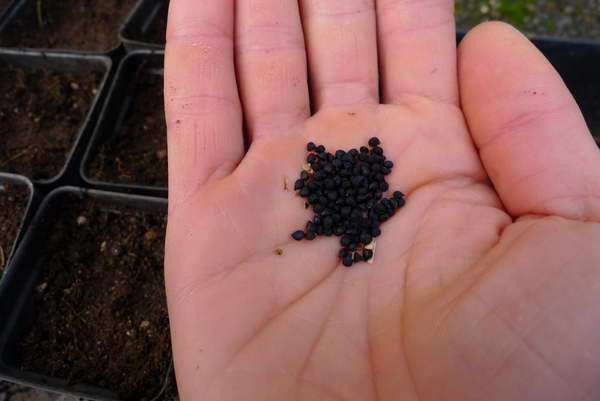
How to plant camassia seeds for seedlings photo
To get good seedlings by spring, you need to prepare the seeds in the fall: mix them with raw sand, put in a bag and hide in the vegetable section of the refrigerator. Keep the seeds there for at least 5 months. Start sowing at the end of February-March.
The seeds are large enough, so you can plant them in several pieces at once in separate pots, so that later you do not suffer with a pick. The seeding depth is 1 cm, after planting, immediately water, drain the excess water from the pallet.
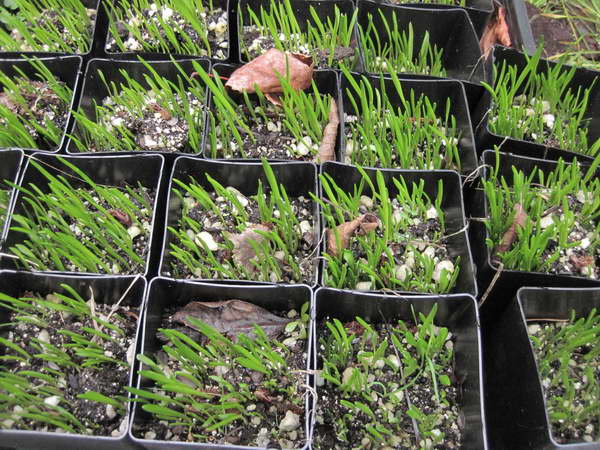
Camassia from seed photos of seedlings
Watering needs moderate and bright diffused lighting with long daylight hours so that the seedlings do not stretch out. As it grows, it can be fed 1-2 times with complex fertilizers for flowers. Before planting, the plants are hardened, leaving them in the garden for a couple of hours at first, bringing the residence time to a full day. When warm weather arrives without frost, they are planted on a flower bed by the transshipment method, leaving a distance of about 30 cm between the bushes.
Camassia grown from seed blooms in the 4-5th year of growth.
Application in landscape design
Bright autumn helenium will decorate every flower bed. Flowers are called "hot" because they bloom in the colors of autumn: orange, rusty, red, yellow and their shades. Peduncles reach a considerable height, much higher than a meter, due to which they dominate in compositions. However, they need to be supported, tied up. Looks beautiful in combination with other naturalistic tall summer flowering perennials:
- rudbeckia,
- asters,
- yarrow,
- chrysanthemums,
- bouquet hydrangea,
- larkspur.
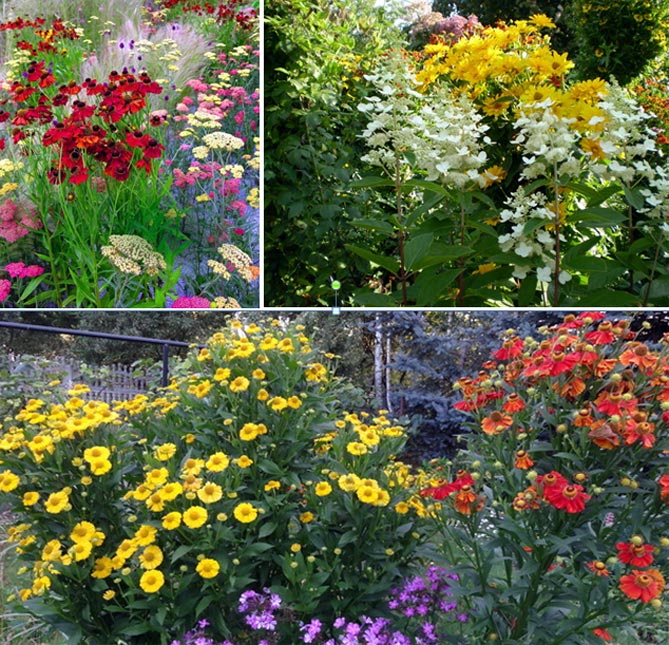
Bright, tall bushes work well against a white wall or openwork fence. Due to the tendency to expose the lower parts of the shoots, especially in drought conditions, it is advisable to plant them in the company of other, lower plants that cover the unattractive bare shoots.Garden geleniums are great plants for cut flowers.

Choosing the right plants in your neighborhood guarantees compensation for flowering from July to October, when many perennials disappear. This should be taken into account when planning the plantings for the next year, because geleniums return to the gardens very often.
Flowers look beautiful in English, naturalistic, or rustic gardens, but they can be used successfully in other garden styles.
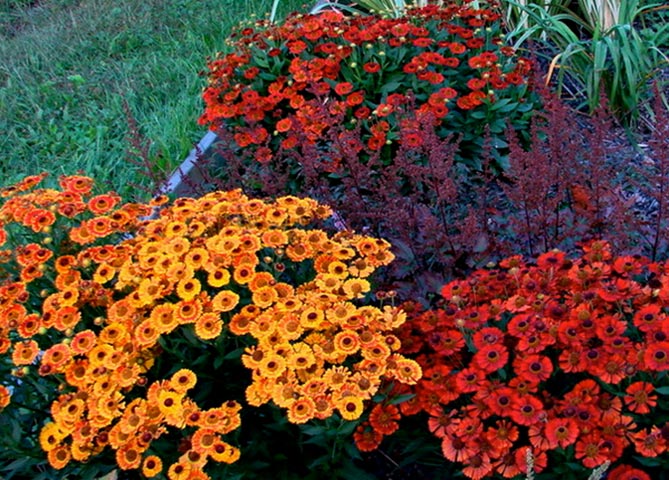
Depending on the height of the bush, the planting method changes:
- High varieties of gelenium are ideal for top-floor flower beds and go well with asters, rudbeckia, phlox. You can create interesting, multi-group decorative combinations along walls, fences.
- Low varieties can be planted at the beginning of the bed, combining plants with catnip, daylilies, yarrow, ornamental grasses, salvia, low asters.

Geleniums bloom in autumn colors: orange, red, yellow and their shades. They are a beautiful and magnificent garden perennial with dazzling petals and bulging baskets, most of which include many garden giants. They are not only tall but also very stable. The peak of flowering is observed in summer in July-August, the flower continues to be attractive until late autumn. They have many advantages because they tolerate unfavorable growing conditions and reward gardeners with beautiful flowers for a long time. Gelenium is loved not only by gardeners, but also by pollinating insects.
Gelenium varieties
In total, the plant has 32 species, of which only 5 are cultivated.
Rare varieties:
- Bigelow - has long, straight stems up to 80 cm tall, brown-yellow flowers up to 6 cm in size, the beginning of flowering occurs in June;
- spring - its tall stems are decorated with bright flowers in brown-orange tones with a diameter of 7 cm, the time for the appearance of flowers comes earlier - in mid-May;
- Gupesa (chupa) - has stems up to 0.9 m in height, at the end of which there are yellow chamomile-like flowers of various shades with an orange center, flowering takes place in June-July.
Autumn
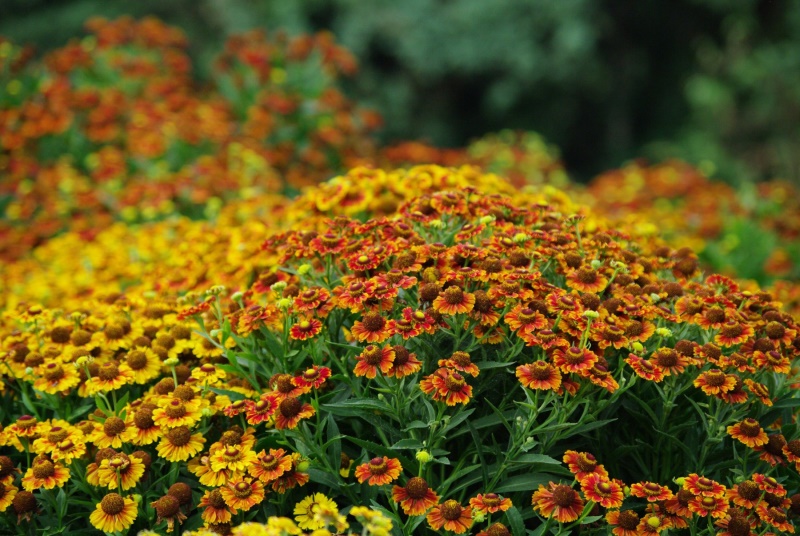
Autumn Gelenium is the most common species, cultivated since the 17th century. The plant has strong stems, reaching a height of 1.5 m.The inflorescences resemble baskets up to 30 cm in diameter, in which many small flowers up to 6 cm (sometimes up to a hundred), with different shades of yellow-red tones. Flowering period - August-September, at least 2 months.
Perennial
Perennial Gelenium, according to the conclusion of botanists, is not a variety, since the plant lacks a developed rhizome that can persist for several years. Immediately after the arrival of autumn frosts, the flowering stems begin to dry out along with the roots. At the same time, living buds have time to grow from the ground part, which form a rosette of leaves with roots suitable for life. In the spring, a flowering stem develops from it. Several independent close-growing plants form a kind of bush of tall stems.
Gelenium Rubintswerg
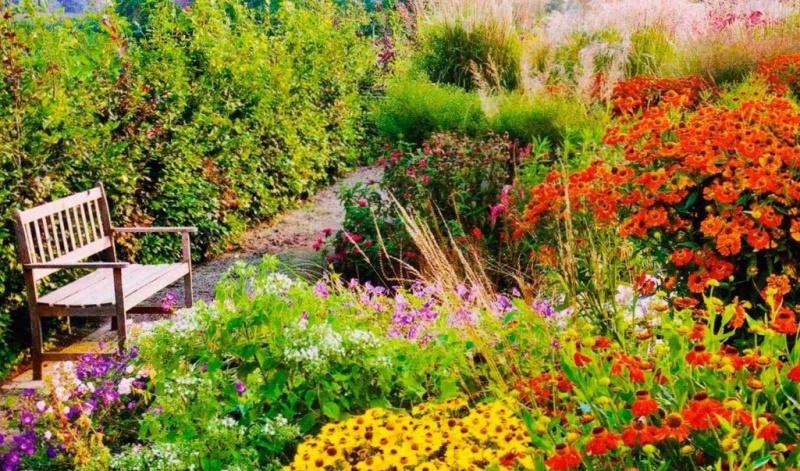
This hybrid variety is in demand among flower growers due to its color: a bush up to 65 cm high consists of inflorescences of juicy ruby red flowers. Flowering time comes in the second half of July.
Hybrid
Gelenium hybrid was created by the works of breeders from representatives of several species on the basis of autumn. Several varieties belong to it: Rubintsverg, Cockard, Red Charm, Phaeton, Moorheim Beauty, Bidremeyer, Sun Rise, etc. Interesting hybrid varieties:
- Cockade is a tall bush (1.2 m), decorated with numerous inflorescences of small buds (4.5 cm in diameter), which have red-brown petals with a yellow border and a red center. Flowering takes place in July-September.
- Moorheim Beauty is a widespread tall variety (up to 1.8 m) with bright flowers, painted in red-copper shades, which slowly darken to red-brown over time, the flowering period is long (July-November).
Care features
The plant is undemanding, which is why gardeners love it so much. The only thing that gelenium does not tolerate is the aridity of the soil. If the summer is dry, you should actively water the flower in abundance. It is also necessary to loosen the soil, weed from weeds. To get rid of weeds, you can mulch the soil with peat or leaves. The flower must be prepared for winter:
-
cut to the soil line;
-
maximum stem height - 15 cm;
-
the zone is mulched with moss, sawdust;
-
on top it is necessary to distribute the non-woven type material.


Top dressing is carried out as follows:
-
at the beginning of the growing season, the plant is treated with growth stimulants;
-
in summer, the plant is fed 3 times with mineral and organic fertilizers;
-
in May, preparations with potassium and organic matter are suitable;
-
during the flowering period, add complex fertilizers and organic matter;
-
in October, fertilize with sulfate-potassium, superphosphate formulations.
Reproduction methods
You can get planting material for perennial helenium in several ways, which are chosen based on the varietal affiliation of the flower and the presence of a mother plant. The most common is the division of the bush, and the less popular is the method of planting by seeds.
Reproduction by division
The most effective way to propagate a culture is division. Mature shrubs consist of numerous shoots that can be successfully separated without causing damage. With this method, they are dug out of the ground entirely, the root system is cleaned, divided into sockets and seated.
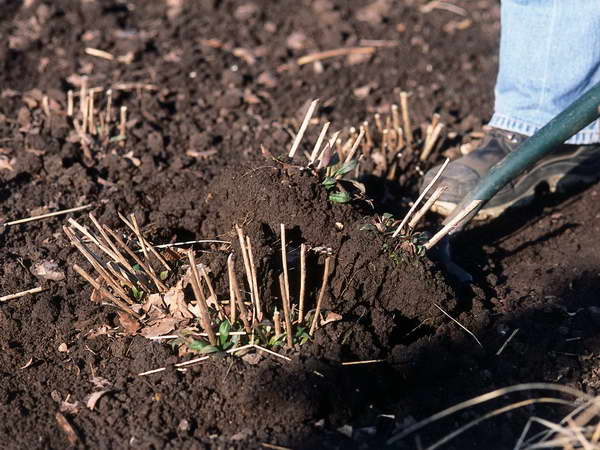
Propagation by cuttings
The method is not very effective, but if it is performed correctly, the result can be achieved very quickly. Perennial cuttings should be removed from the stems at the time of active vegetation (spring) and soaked in water for a couple of weeks. After sprouting of the roots, the sprouts should be placed in a nutrient substrate and covered with a film. After a few weeks, plant the seedlings in a permanent place.
Seeds
Helenium is obtained from seeds at home or in the open field. This method is usually used in the absence of a mother plant, as well as when growing new varieties.
The method is very laborious, in which it should be borne in mind that not all varieties can grow from seeds
In addition, it is important to use only fresh planting material, since it has poor germination.
Varieties and types
There are a great many varieties of helenium, let's try to describe the most popular of them.
Rubinzwerg
Gelenium Rubinzwerg, as the name suggests, has dark red or ruby color its buds are three to five centimeters in diameter, the central part of the flower is darker with a yellow border. The plant is about sixty centimeters high and belongs to the autumn species. This popular variety blooms from late July to October.

Ruby Tuesday
The burgundy color is also inherent in the Ruby Tuesday helenium. This variety is one of the smallest, its height rarely reaches half a meter. The flowers are also smaller than those of Rubintswerg, only up to three centimeters across. It blooms for two months: from early August to early October.

Canaria
Gelenium Canaria is a typical representative of the hybrid species of this plant. Its straight and strong woody stems rise 110-120 centimeters above the soil. The tops of the stems branch out, forming inflorescences forty to fifty centimeters in diameter with pale yellow petals around an orange core. The scent of these flowers attracts many insects, especially honey bees. Flowering duration is short, only about forty days: from early August to mid-September.
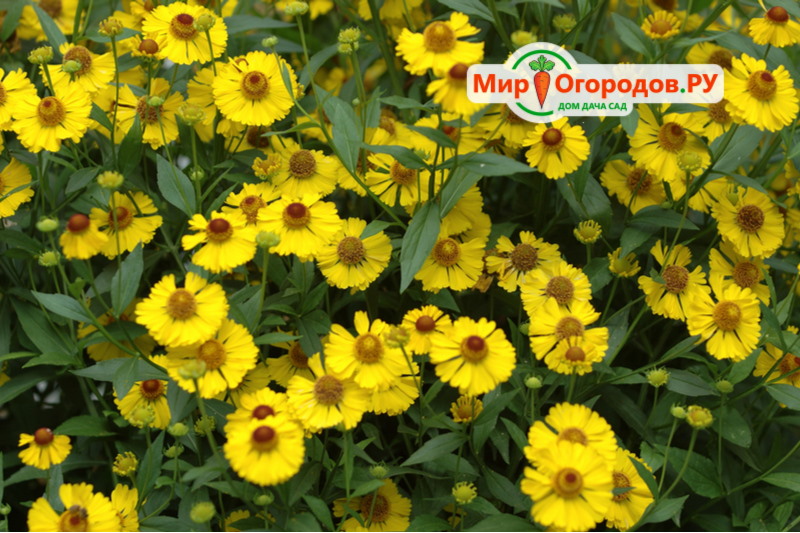
Autumn jazz
Gelenium Autumn jazz in the form of a plant and a flower is similar to Canaria, only it differs in a brighter color of both the core and the petals.

Sunrise
Gelenium Sunrise is distinguished by the growth of its stems increased to 130 centimeters and the red-brown tint of the central part of the flower with lemon-yellow petals. But sellers often call this a mixture of several varieties of this floral plant.

The petals and the middle of the Helena Gold helenium are yellow in color with a flowering period of up to two months.
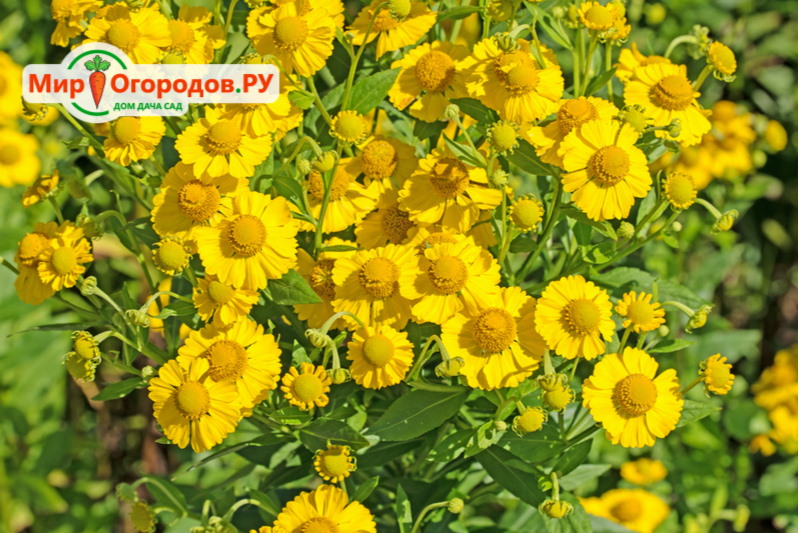
Hupa
Gelenium Chupa, or Gupesa, is a separate species of this genus. Unlike the others we have considered, this is a rhizome plant up to 90 centimeters tall with early flowering. The species blooms in June and blooms for a month and a half. As you can see in the photo, in terms of the structure of the flower, it differs from the autumn hybrid helenium.
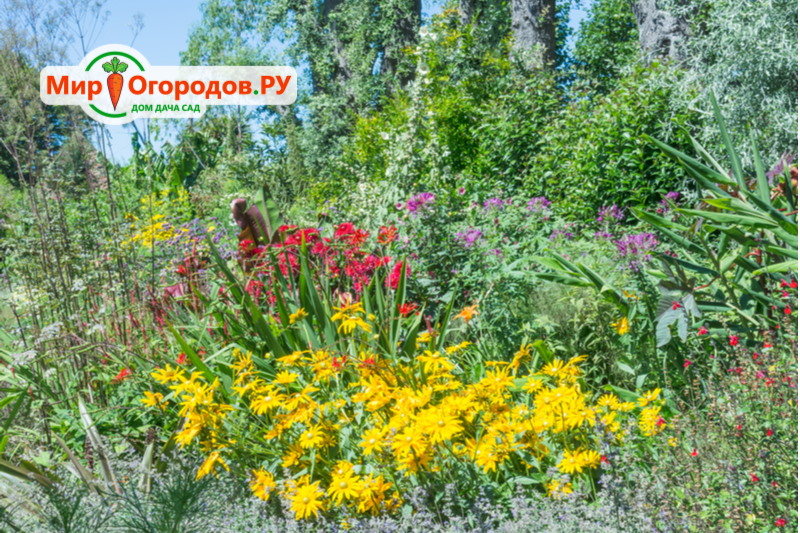
Diseases and pests
Camassia is resistant to diseases and pests.
Occasionally, it is possible to be affected by fungal diseases, which lead to rotting of the bulbs. Prevention is the etching of the planting material before planting. If the disease occurs, dig up the bulbs, cut off the affected areas and apply a fungicide treatment. If the damage is significant, the bulbs cannot be saved.
The most dangerous pest is the root bulb mite. Signs of pest damage:
- The sheet plates are deformed, covered with a white bloom;
- Bulbs wrinkle, white spots appear on them;
- In places where ticks have settled, mold and rot appear.
Bulbs affected by the pest will have to be destroyed. Treat plantings with an insecticide. You can add a solution of nettle infusion under the root. It is prepared as follows: pour 1 kg of nettle with 5 liters of boiling water and leave to ferment for 5 days, then dilute with water in a ratio of 1 to 10 and process the planting. For preventive purposes, the bulbs are placed in hot water before planting.
Occasionally slugs can be found on Camassia leaves - they are collected by hand, various traps are used.
Helenium care
The plant is unpretentious and easily adapts to any conditions, but especially loves open, sunlit areas.
Planting a plant
Planting gelenium is carried out in several ways, depending on climatic conditions:
- in warm regions, it is best to sow seeds directly into the ground in March-April in a well-fertilized flower bed (it is better to cover it with a film before sprouting), autumn sowing is also practiced, but the percentage of sprouting will be lower;
- in colder regions, it is recommended to plant seeds for seedlings at the end of winter, they must first be stratified.
When growing seedlings, the following rules must be observed:
- 1.5-2 months before planting in open ground, sow seeds mixed with earth, cover the containers with glass or polyethylene and put them in a cool dark place for 3-4 weeks;
- then move the boxes to a warm room and wait for the first shoots to appear, this process can be stimulated by installing additional lighting;
- after 3 weeks, the finished seedlings are planted in open ground.
Requirements for planting gelenium:
- The flower grows on any soil, but prefers a looser one due to a weak root system. To improve looseness, it is recommended to add peat to the soil.
- The plant prefers a sunny, well-lit location, does not like darkened areas under trees and drafts.
- The optimal time for planting seedlings in the ground is the end of May, when the ground has time to warm up and the threat of frost decreases.
- The number of plants per 1 m² is 4-5, since the root system is quite branched and requires space.
The rules for caring for helenium are simple:
- timely watering, on dry days - more often;
- regular shallow loosening of the soil with mulching;
- timely removal of sluggish and dried inflorescences;
It is important to know: in the fall, when there is a threat of frost, the plant is cut off, leaving 10 cm above the surface, and then covered with sawdust or straw.
Fertilizer and feeding
During the summer season, helenium needs 3-4 feeding:
- In early spring, after the snow melts, nitrogen fertilizers are added.
- In May, organic fertilizing is carried out: 1 tbsp. l. urea, potassium sulfate, dilute in a bucket of warm water, add 1 tbsp. l. complex mixture "Effekton". Consumption - 3 l / m².
- At the beginning of flowering, a solution of 1 tbsp is made. l. "Agricola-7" for 10 liters of water with the addition of 1 liter of liquid mullein.
- In the middle of autumn, the plant is prepared for winter: 1 tbsp is diluted per 10 liters. l. superphosphate and potassium sulfate and add at the rate of 5 l / m².
Reproduction of helenium
There are 2 main ways of breeding gelenium:
- dividing the bush (vegetative);
- seeds and seedlings.
An adult bush grows well in 2-3 years of active growth, but consists of individual plants. At the end of each season, the stems of the helenium die off along with the root collar. However, a ripe bud begins to germinate quickly, forming rosettes in the aerial part, which will grow again next season.
This feature can be used when conducting vegetative propagation by dividing the bush. Disconnected sockets are seated in flower beds. According to the estimates of flower growers, up to 30 new plants can be obtained from a 3-year-old helenium.
Another way to propagate helenium is to grow seeds and then seedlings from them. Seed material is harvested in the fall, preferably before the start of the rains. Ripeness can be judged by the appearance of the inflorescences: the petals begin to darken, and the middle begins to turn black. This means that the seeds are ripe. However, it is not always possible to get seedlings from your own seeds, so it is better to buy them in the store.
Diseases and pests
Gelenium is not very susceptible to diseases and pests. Sometimes attacks of chrysanthemum nematodes occur, which can damage leaves and inflorescences. The only method of treatment: cutting and burning dried parts of the plant. To prevent disease, it is recommended to add slaked lime to the soil.
General description of autumn helenium
Helenium autumnale is a perennial herb belonging to the Asteraceae family of the same genus. In natural conditions, this flower can be found along roads and roadsides, as well as in wetlands and meadows. Its homeland is North America, the plant is distributed throughout the world as a horticultural crop. And when the proper conditions are provided, helenium grows rapidly, forming branched, flowering and lush bushes.
Stems are erect, slightly pubescent, powerful. In one bush, their number is from 1 to 7 pieces, they together form a column. Depending on the variety, autumn helenium can grow from 50 cm to 1.5 m in height. The green mass is moderate, alternating along the entire length of the stem. The leaf plates are small, elongated lanceolate with serrated or smooth edges, slightly pubescent.
The flowering period is July-October. The very first buds can be seen at the end of June at the tops of the shoots. At this time, single flowers with a protruding rounded basket are formed. Their diameter is approximately 3-5 cm. The color varies from yellow to brown-red. The petals have a scalloped edge. The heart is convex, consisting of numerous small tubular flowers.
From 15 to 20 inflorescences can form on one stem at the same time. Depending on the variety, they have a terry, semi-double or plain surface and are different in shade.
At the end of the flowering of helenium, cylindrical, oblong achenes of a light brown shade, slightly pubescent, appear. They do not exceed 2 mm in length and have a crest of 5-7 scales.
Attention! The root system is superficial, underdeveloped and after flowering it dies off, then new rosettes form in its place, without transplanting in one place, helenium grows no more than 4 years
Types and varieties of gelenium with photos and descriptions
Hegenium autumn helenium autumnale

Helenium autumn Fuego Helenium Fuego planting and care in the open field photo
Autumn Gelenium, cultivated since the 17th century, is the most widespread. The abundant late flowering is considered to be the distinguishing advantage of this flower. The bushes of the autumn variety of helenium have a columnar shape. Strong stems of this variety can rise up to 2 m in height.
The upper part is strongly branched. Each branched part ends with a beautiful golden flower, a basket with a diameter of 6 cm. As a result, each stem can have up to several hundred flowers. The autumn variety blooms in early August, beautiful flowering continues for another month, the seeds are fully ripe by October. Currently, there are many unpretentious varieties of this flower that are excellently used in landscaping.
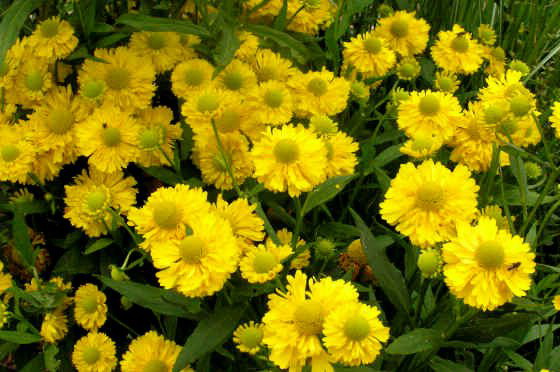
Autumn Gelenium Double Trouble Helenium Double Trouble planting and care photo
Varieties with a yellow marginal flower color are very popular. Among them is the undersized Magnificum, reaching only 80 cm in height. Its middle is classically yellow, it pleases with lush flowering in late July - early August.

Gelenium Sunrise lemon Gelenium growing and caring for a photo of flowers in the garden
Medium-tall Gartenzonne stretches up to 110 cm, gives lush baskets with a diameter of 6 cm, the middle of the flower is brown. Flowering begins in late July.
The adorable Katarina is 140 cm high, and the middle of her flower is also brown. Lush flowering pleases from mid-August.

Gelenium autumn sunrise red What does helenium look like photo how to plant helenium
The magnificent variety Moorheim Beauty reaches 180 cm in height, the middle of the flower has a yellow-brown tint. Abundant flowering also begins in mid-August.
They also bred varieties with a red color of flowers. Among them, it is worth noting the medium-tall variety Di Blonde, which has a developed dense bush up to 170 cm high. Its marginal flowers are red-brown in color, the middle is also brown. This variety begins to bloom in mid-August.
An interesting low-growing variety Glutauge, it gives baskets with a diameter of 6 cm, the core of the flowers is red-brown.

Gelenium Moorheim Beauty Gelenium autumn varieties garden flower helenium photo in the garden
The natural environment for the distribution of heleniums is wet, swampy areas. The roots of the plant are superficial, they are poorly developed. The bred varieties of autumn helenium are cultivated in illuminated areas. The garden soil for them must be provided with proper watering. Sufficiently high grades are tied to wooden stakes. Geleniums have a high growth rate, after 3 years of intensive development, it gives up to 30 new stems.
The plant itself also ages quickly, as it grows in breadth. It is for this reason that in the 4th year of development it is necessary to divide the bush and transplant to a new place. The optimal time for the next transplant is early spring, when the dug out plants easily disintegrate into separate outlets, 2 of them are planted in prepared places.
Strong helenium Chupa Gupesa Helenium hoopesii

Strong helenium gupesa Helenium hoopesii photo of flowers in the garden planting and care
This plant grows comfortably in rocky terrain. It has a developed rhizome, large basal leaves, strong stems. Gelenium gupesa gives rather large baskets with a diameter of 10 cm, its flowers are orange in color. This variety has a long flowering period of up to 40 days, starting in July. Then it begins to bear fruit, has breeding methods similar to autumn helenium.
Helenium hybrid
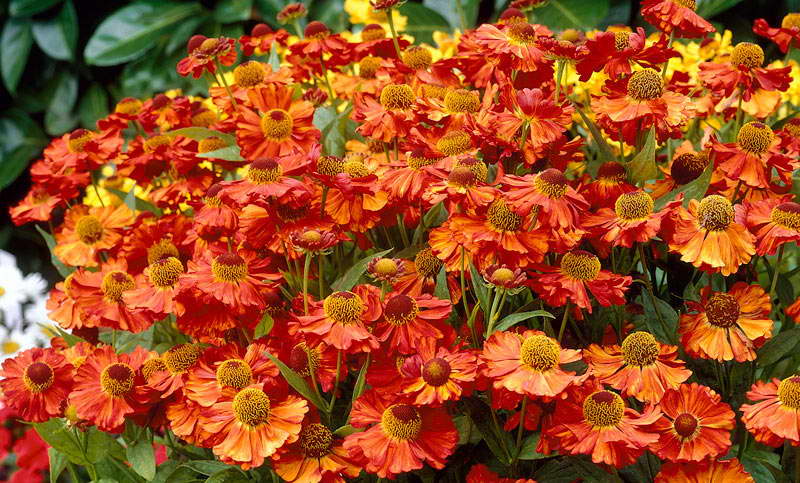
Gelenium bright beauty Garden flower helenium Flowers perennials helenium
This category includes all garden heleniums obtained by crossing the first two forms. They differ in height, shape, color of flower baskets, and have different flowering periods.
Among them, it is worth noting the high variety Gartenzonne, growing up to 130 cm in height, with inflorescences up to 3.5 cm in diameter. The color of the flowers is from reddish-yellow to yellow-brown. Lush bloom is observed from July.
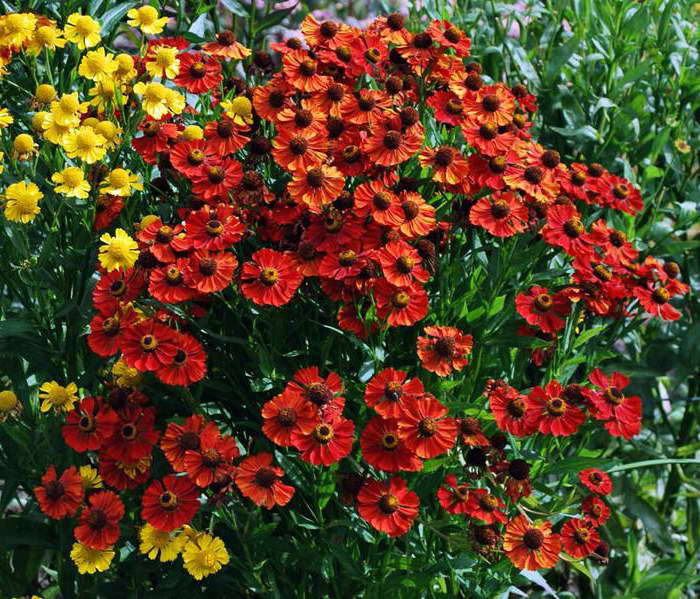
Gelenium hybrid Rubinzwerg Rubinzwerg red helenium perennial photo of flowers planting and care
The medium-sized variety Goldlaktswerg stretches only up to 100 cm. It gives inflorescences of a compact shape, up to 4.5 cm in diameter. The color of its reed flowers is brown-orange, with yellowish tips. Abundant flowering begins in July.
Also in the culture, the Gelenium variety Rothaut is widespread, capable of developing up to 120 cm in height. It is capable of producing inflorescences up to 4.5 cm in diameter. The color of the reed flowers is intensely brown, the tubular inflorescences are yellow-brown in color, lush flowering is observed from July.




